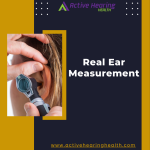Understanding Real Ear Measurement: Essential Practices and Techniques
Do you struggle with properly fitting hearing aids? Are your patients consistently complaining about discomfort or sound quality issues? Real Ear Measurement (REM) may be the solution to all of these problems. As an ear specialist or audiologist in Omaha, understanding REM practices and techniques is essential for providing top-notch care to your patients. We will explore the benefits of REM, and the different types available, and share tips for accurate measurement that can improve patient satisfaction and outcomes. So let’s dive in!
The Benefits of REM
Real Ear Measurement (REM) is a process that involves measuring the sound pressure level inside a patient’s ear canal. There are numerous benefits to using REM, including improved hearing aid fitting and customization. By using REM, hearing aid doctors near me can ensure that they are adjusted to meet the specific needs of each individual patient.Another key benefit of REM is its ability to help patients achieve optimal speech understanding and sound quality. Without proper measurement, hearing aids may not deliver adequate amplification or clarity for certain frequencies or volumes. This can lead to frustration and dissatisfaction among patients who feel their devices aren’t working as they should.The Different Types of REM
Real Ear Measurement, or REM, is an essential practice for ear specialists and audiologists to ensure that hearing aids are functioning correctly. There are various types of REM techniques available that can provide different benefits depending on the situation.One type of REM is called Speech Mapping. This technique involves using live speech stimuli to verify that the hearing aid output corresponds with the patient’s desired amplification targets. It ensures optimal sound quality and appropriate levels of amplification for each frequency range.Another type of REM is Real Ear Unaided Response (REUR). This test measures the unaided response in a patient’s ear canal before they put on their hearing aids. By measuring baseline responses, clinicians can evaluate how much gain and output should be applied through the hearing aid based on individual needs.
For More Info:-https://www.activehearinghealth.com/






















































